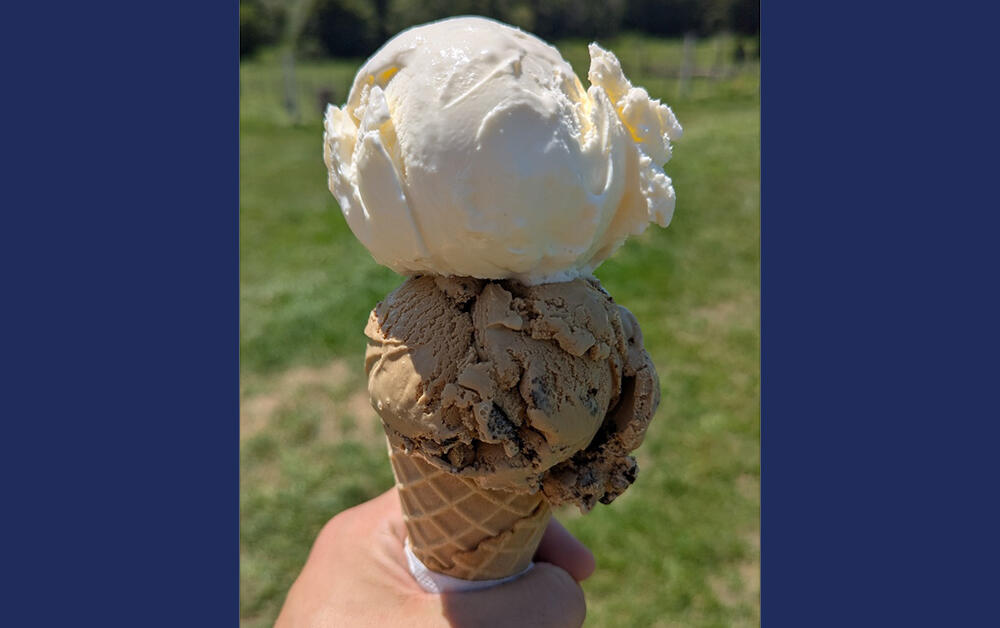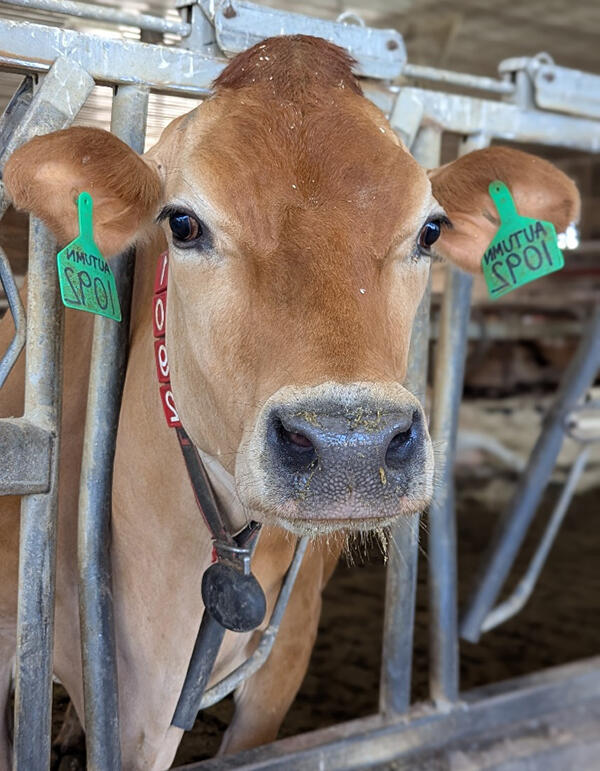- Trial Court Law Libraries

Photo above: Ice cream from a local farm in Lee, Massachusetts.
What Is Legally Ice Cream?
Under federal law, the definition of ice cream is strictly regulated.
The U.S. Food and Drug Administration (FDA) regulates ice cream under 21 CFR 135.110. According to these rules, which is part of the FDA's "Standards of Identity" (SOI) for food, ice cream must:
- Contain at least 10% milkfat
- Contain no less than 1.6 pounds of total solids per gallon
- Contain no less than 20% milk solids (there are separate calculations if fruit and nuts are added)
- Weigh at least 4.5 pounds per gallon
The regulations also dictate how ice cream flavor can be marketed including whether ice cream can be labeled “naturally flavored” or “artificially flavored.”
These rules ensure that when you pick up a pint labeled “ice cream,” you’re getting an actual dairy product with a certain quality and consistency. It also ensures safety by allowing people to know the ingredients in their food that they might be otherwise allergic to.
What is Overrun?
Overrun is the amount of air whipped into the ice cream. It increases the volume of the ice cream and manufacturers often do it to make more with less. While not legally regulated, overrun is often used for marketing purposes. Premium ice cream is typically below 30% overrun, while economy ice cream is above 80%.
Frozen Yogurt, Sherbet, and Frozen Desserts
Not everything in the freezer aisle qualifies as “ice cream.”
- Frozen yogurt is not held to the same federal standard. It’s often lower in fat, contains live cultures, and isn’t required to meet the 10% milkfat rule. That means it's not ice cream according to the law.
- Sherbet, per 21 CFR 135.140, must contain between 1% and 2% milkfat, putting it legally between sorbet (non-dairy) and ice cream.
- Frozen custard is very similar to ice cream; however, when the product contains more than 1.4 percent egg yolk solids by weight of the finished food, it must be labeled custard.
- Frozen desserts or “non-dairy frozen treats” (like those made from almond or oat milk) are legally not ice cream at all. They’re often labeled with terms like "frozen dessert" or "non-dairy frozen confection" to comply with FDA labeling laws. Popsicles and sorbets also fall under this category.
Massachusetts Regulation and Guidance
While most of the defining regulations come from the FDA, Massachusetts also regulates ice cream and other food.
Under 105 CMR 500.000, Massachusetts applies its Retail Food Code and adopts many FDA standards. The Massachusetts Department of Public Health (DPH) oversees food safety and quality, including frozen dairy products. The Division of Food Protection provides additional guidance on the licensing and testing requirements for frozen dairy products.
Why Does My Pint Say “Frozen Dairy Dessert”?
Some brands use the term “frozen dairy dessert” instead of “ice cream.” It often means the product doesn’t meet the milkfat or milk solids required for legal ice cream status. It may contain more stabilizers, fillers, less fat, or be whipped to high volume—making it technically different, even if the flavor is close.
So next time you’re choosing your treat, check the label. If it says “frozen dairy dessert,” you’re not getting the legal definition of ice cream.
Massachusetts Made
Ice cream is made and enjoyed all across the Commonwealth. Check out MassGrown's Ice Cream Trail Map, which features over "100 destinations where you can find your favorite flavors, brought to you by the hardworking farmers and cows in Massachusetts."
So whether it’s churned in a small-batch creamery in the Berkshires or mass-produced for supermarket shelves, frozen dessert makers in Massachusetts must follow the rules.

